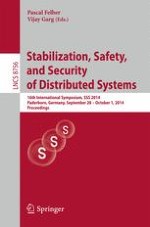This book constitutes the refereed proceedings of the 16 International Symposium on Stabilization, Safety and Security of Distributed Systems, SSS 2013, held in Osaka, Japan, in September/October 2014. The 21 regular papers and 8 short papers presented were carefully reviewed and selected from 44 submissions. The Symposium is organized in several tracks, reflecting topics to self-* properties. The tracks are self-stabilization; ad-hoc; sensor and mobile networks; cyberphysical systems; fault-tolerant and dependable systems; formal methods; safety and security; and cloud computing; P2P; self-organizing; and autonomous systems.
